1. Levine JA. Non-exercise activity thermogenesis (NEAT). Best Pract Res Clin Endocrinol Metab. 2002; 16(4):679–702.

2. Wood W, Tam L, Witt MG. Changing circumstances, disrupting habits. J Pers Soc Psychol. 2005; 88(6):918–33.

3. Wood W, Runger D. Psychology of Habit. Annu Rev Psychol. 2016; 67:289–314.

4. Brown T, Avenell A, Edmunds LD, Moore H, Whittaker V, Avery L, et al. Systematic review of long-term lifestyle interventions to prevent weight gain and morbidity in adults. Obes Rev. 2009; 10(6):627–38.

5. Lally P, Gardner B. Promoting habit formation. Health Psychol Rev. 2013; 7(sup1):S137–S158.

7. Doh Y, Keum S, Lee S, Lee J. Exploratory research on the factors that affect the usability and sustenance of wearable devices for health management: discussion of user experience in the combined perspectives of technology, psychology, and interaction. Commun KIISE. 2014; 32(11):37–45.
8. Powell AC, Landman AB, Bates DW. In search of a few good apps. JAMA. 2014; 311(18):1851–2.

9. Gardner B, Lally P, Wardle J. Making health habitual: the psychology of ‘habit-formation’ and general practice. Br J Gen Pract. 2012; 62(605):664–6.

11. Choi MJ, Kim WG. An exploratory study on use motivation, evaluation and selection of SNS mobile marketing services focused on the “KakaoTalk PlusChingu”. Korean J Advert Public Relat. 2013; 15(2):85–110.
12. Lee J, Lee H. The effects of smart program for patients who underwent percutaneous coronary intervention (SP-PCI) on disease-related knowledge, health behavior, and quality of life: a non-randomized controlled trial. J Korean Acad Nurs. 2017; 47(6):756–69.

13. Gardner B. A review and analysis of the use of ‘habit’ in understanding, predicting and influencing health-related behaviour. Health Psychol Rev. 2015; 9(3):277–95.

14. Huang J, Zhou M, Yang D. Extracting Chatbot knowledge from online discussion forums. In : Proceedings of the 20th International Joint Conference on Artificial Intelligence; 2007 Jan 6–12; Hyderabad, India. p. 423–8.
15. Srikesavan C, Williamson E, Cranston T, Hunter J, Adams J, Lamb SE. An online hand exercise intervention for adults with rheumatoid arthritis (mySARAH): design, development, and usability testing. J Med Internet Res. 2018; 20(6):e10457.

16. Karppinen P, Oinas-Kukkonen H, Alahaivala T, Jokelainen T, Teeriniemi AM, Salonurmi T, Savolainen MJ. Opportunities and challenges of behavior change support systems for enhancing habit formation: a qualitative study. J Biomed Inform. 2018; 84:82–92.

17. Louro MJ, Pieters R, Zeelenberg M. Dynamics of multiple-goal pursuit. J Pers Soc Psychol. 2007; 93(2):174–93.

18. Lally P, Van Jaarsveld CH, Potts HW, Wardle J. How are habits formed: modelling habit formation in the real world. Eur J Soc Psychol. 2010; 40(6):998–1009.

19. Venkatesh V, Davis FD. A theoretical extension of the technology acceptance model: four longitudinal field studies. Manag Sci. 2000; 46(2):186–204.

20. Eyal N. Hooked: how to build habit-forming products. London, UK: Penguin;2014.
21. Oh S. (ro)Bot as media: an experimental discussion on news Chatbot. Korean J Commun Inform. 2016; 79(5):70–103.
22. Lee MS, Kim SH. Factors affecting the use of the intelligent Chatbot services. J Serv Res Stud. 2017; 7(3):37–55.
23. Wood W, Neal DT. A new look at habits and the habit-goal interface. Psychol Rev. 2007; 114(4):843–63.

24. Deci EL, Koestner R, Ryan RM. A meta-analytic review of experiments examining the effects of extrinsic rewards on intrinsic motivation. Psychol Bull. 1999; 125(6):627–700.

25. Kaushal N, Rhodes RE. Exercise habit formation in new gym members: a longitudinal study. J Behav Med. 2015; 38(4):652–63.

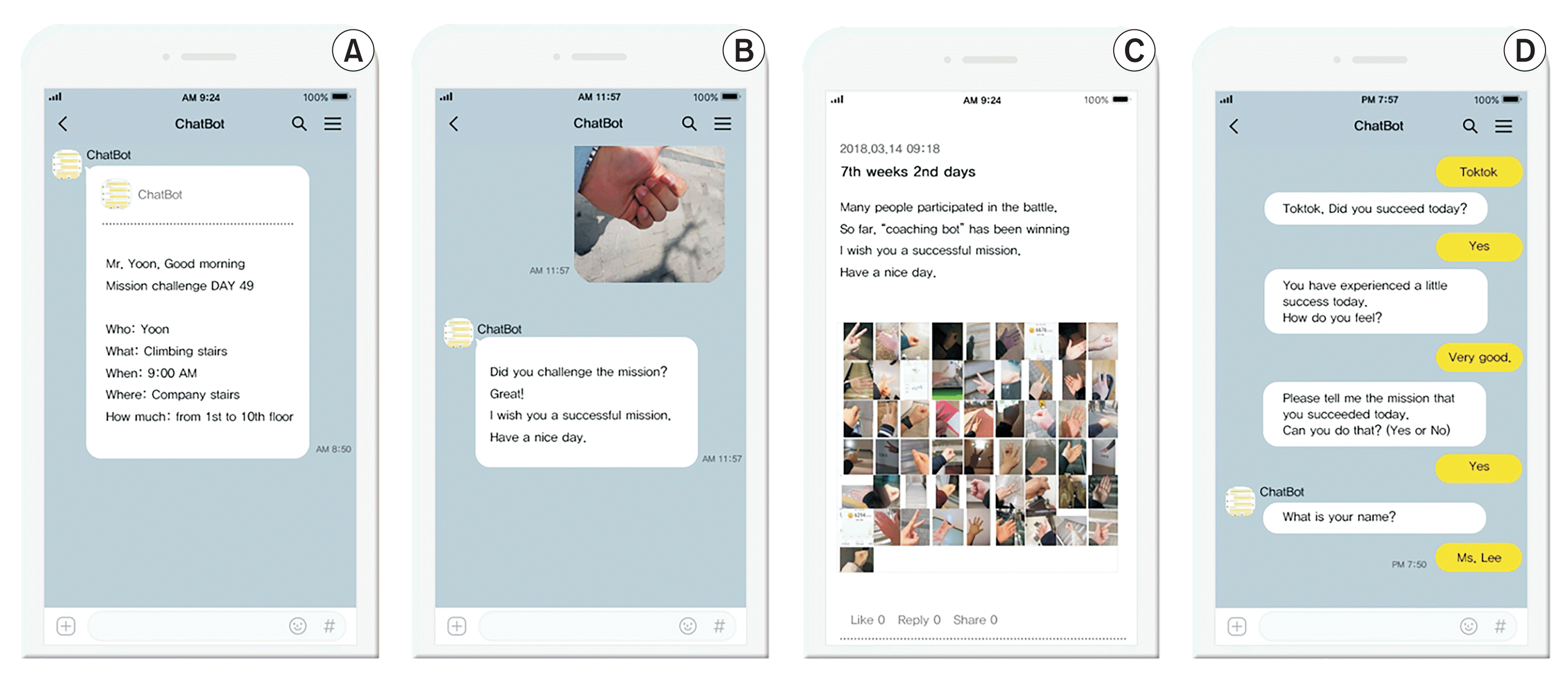




 PDF
PDF Citation
Citation Print
Print



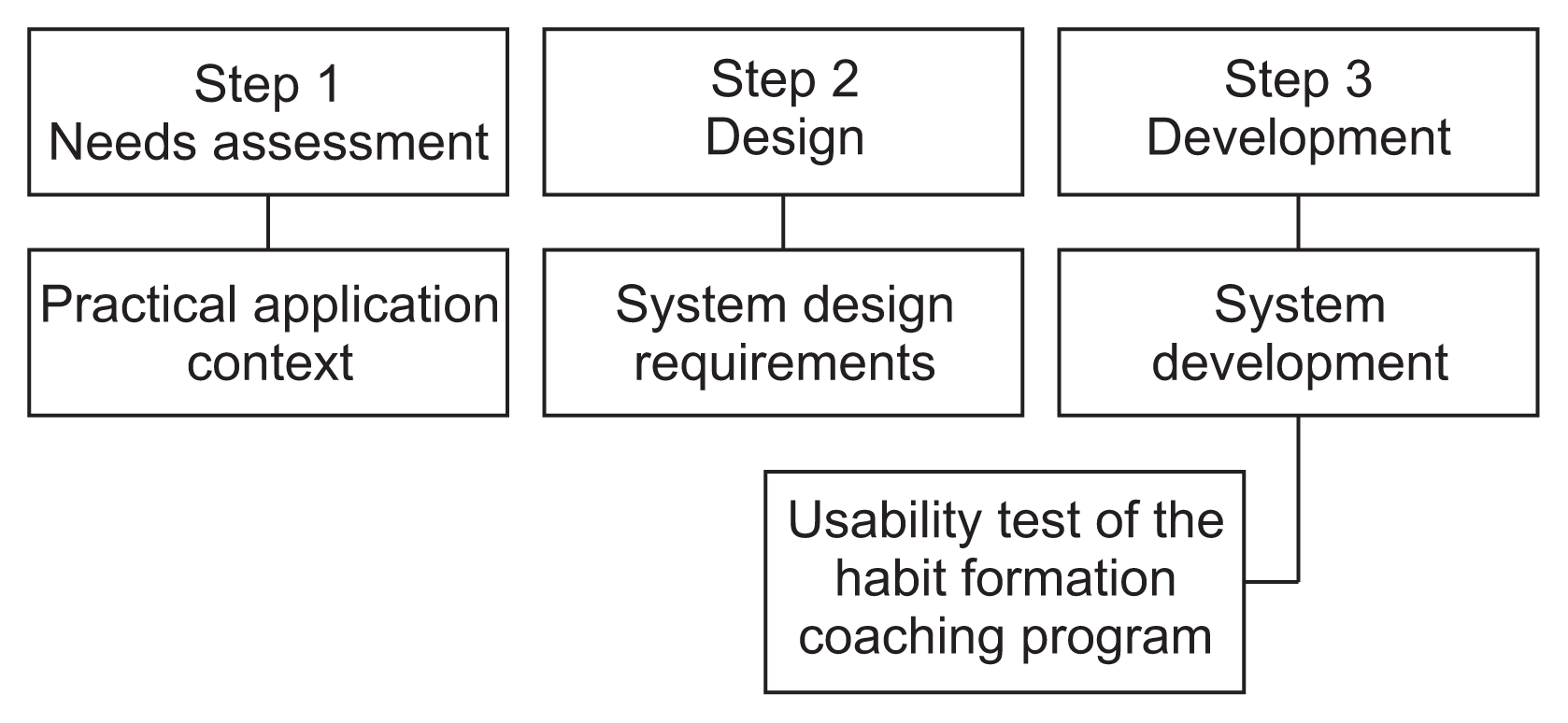
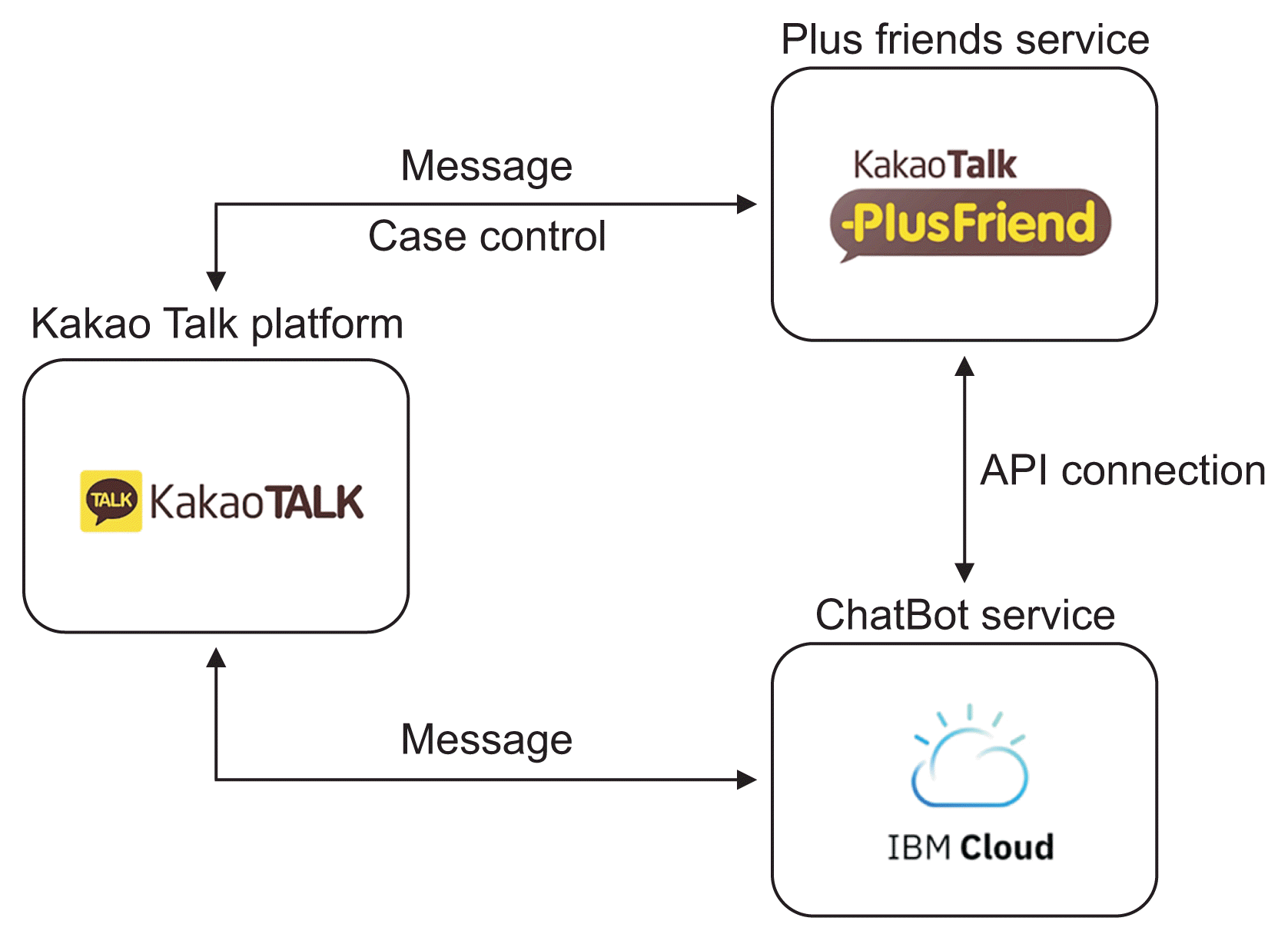
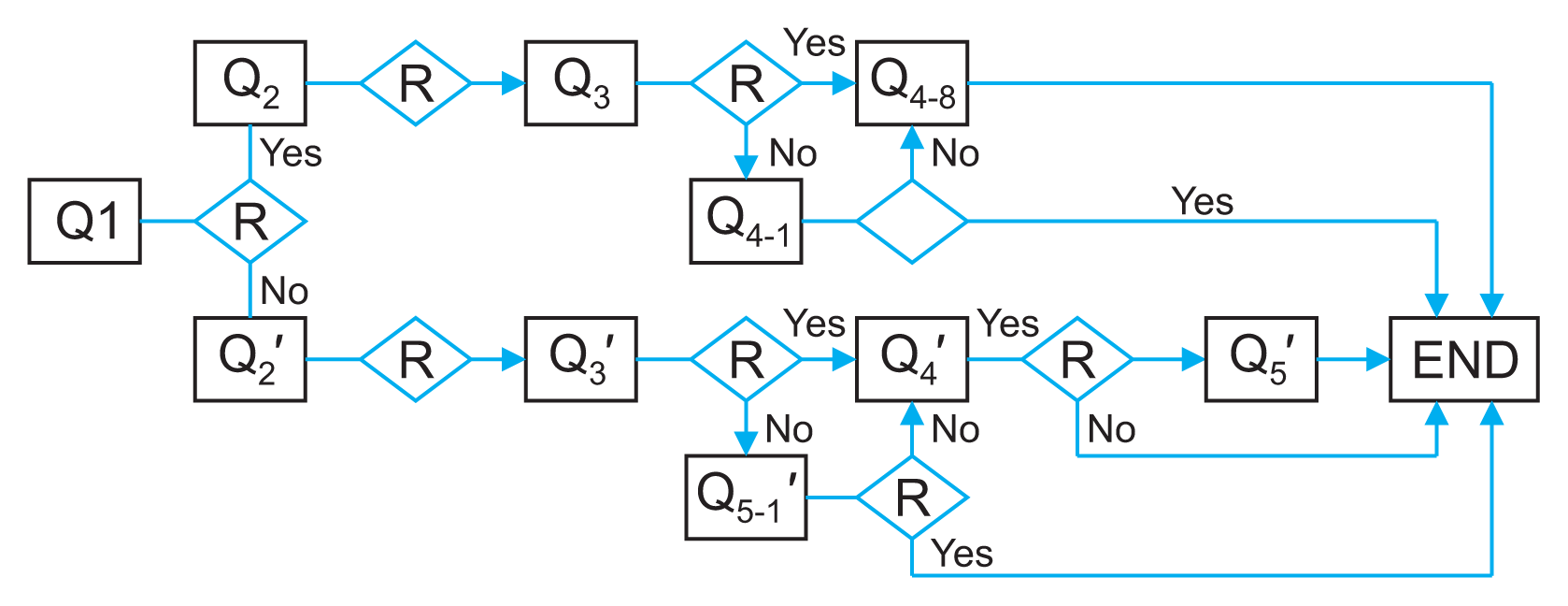
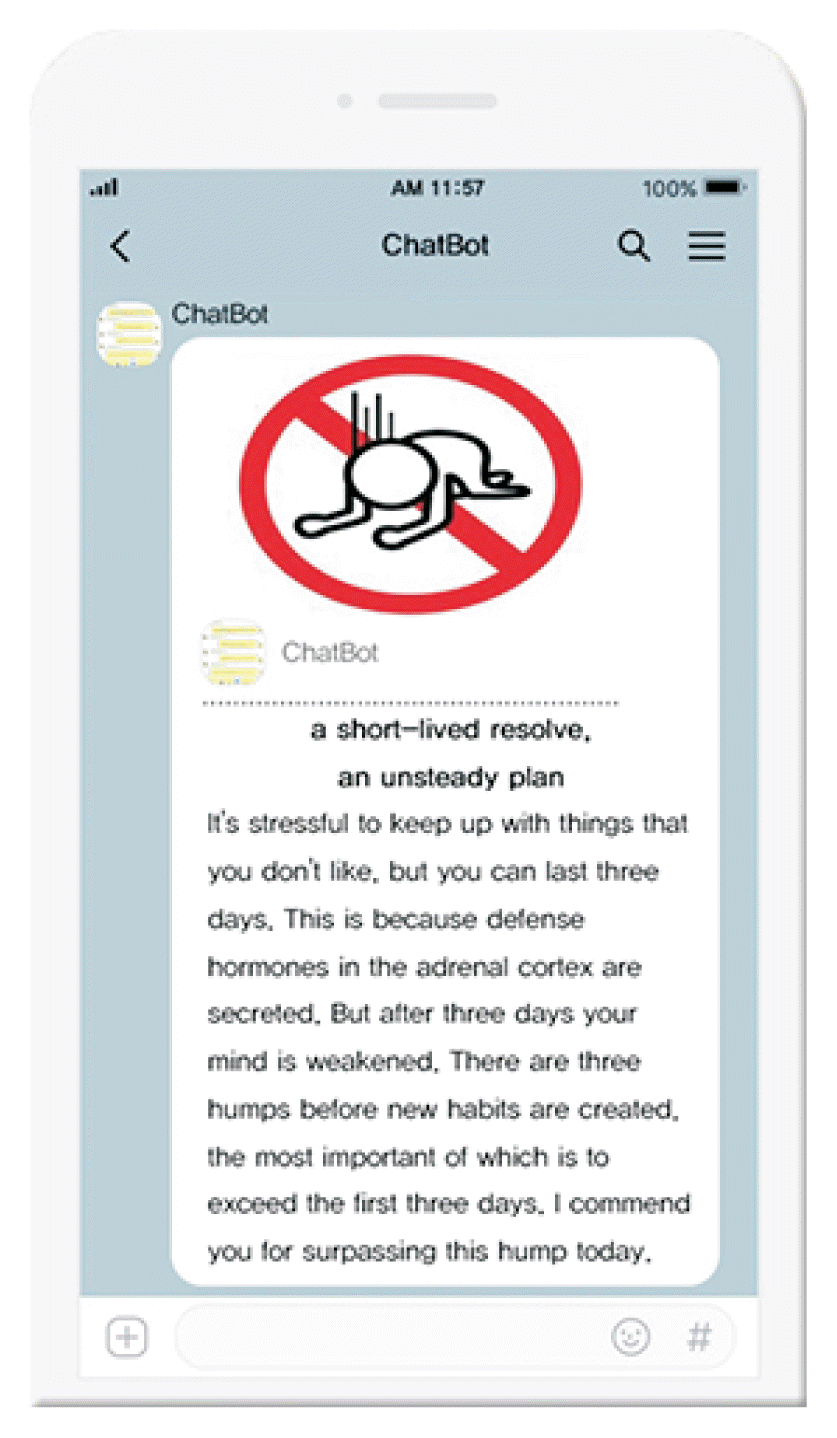
 XML Download
XML Download